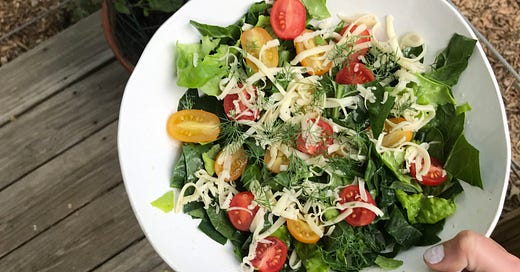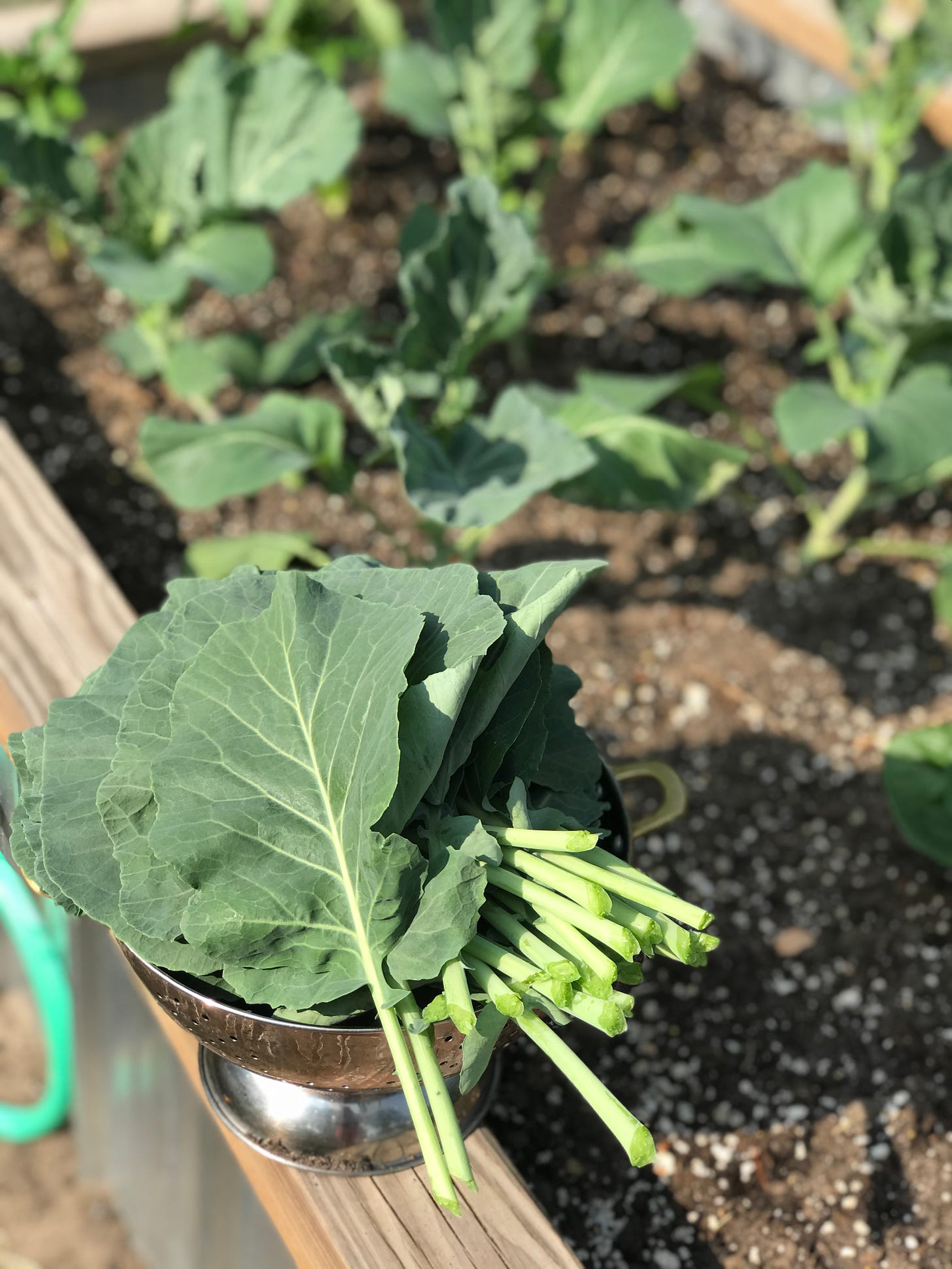Welcome to 🍅 GARDEN NOTES 🥬
A gardener lite logbook of weekly learnings & findings as I tend to my garden this season. Receiving guidance primarily from my elders; my neighbor, mother-in-law, grandparents, and greenhouse friend. Secondary resources are the Old Farmer’s Almanac and Google.
Logbook:
Week 5: First harvest (you’re here.)
WEEK 5 | JUNE 18 – JUNE 25, 2023
Thanks to my neighbor and mother-in-law watering the second half of last week, I came home to the salad bed ready for its first harvest!
The first raised bed lent to me by my neighbor is lovingly called the salad bed because it’s made up of all my greens — collard greens, spinach, and blue kale. I wanted buttercrunch lettuce as well but I would’ve had to start that from seed with my options available around Memorial Day and it was too late by then.
I’m learning that my collards and spinach are cool-weather plants and could’ve been planted earlier than Memorial Weekend as they can withstand some of the final frosts of the late Spring season. The mix of the plant food in week 3 and cooler weather after that late Spring heat wave made my collards so full and beautiful. I had a large harvest upon my return! I’ll try to harvest them earlier in the coming weeks though — the larger the leaves on the stem, the thicker they are (longer steam time), and the more bitter they taste.

I’ve never seen spinach leaves as big as the ones I harvested this week! I’m used to the baby spinach in the grocery store and now I see why baby spinach is a commodity; the smaller leaves aren’t as bitter tasting or tough on your stomach when digesting (at least this gardener’s stomach, hi.)
These spinach leaves were also more in the shape of a spade than the rounded edges of the smaller leaves. Just a subtle observation I had when cutting each stem from the stalk.
Lesson 1: Plant cold-weather greens like collards and spinach pre-Memorial weekend.
Lesson 2: Harvest collard greens and spinach before they reach the size of your hand for a less bitter taste.

It’s impossible to describe the feeling I had making my first salad from the greens I’ve been tending to for a month. Adding my favorite dill cheese fresh from the market and topping it off with fresh dill from my backyard — well, I’m understanding food more intimately, in communion with all that must happen to be nourished. I further despise the buzzing of sterile lighting and cold tile floors of box grocery stores, confused at how we package our fresh food in plastic and force what is wild to our will. Humans can be real assholes.
SALAD, a term derived from the Latin sal (salt), which yielded the form salata, “salted things” such as the raw vegetables eaten in classical times with a dressing of oil, vinegar or salt. The word turns up in Old French as salade and then in late 14th century English as salad or sallet.
— Oxford Companion to Food, Alan Davidson [Oxford Univeristy Press: Oxford] 2nd edition, 2006 (p. 682). Emphasis my own. Source.
This week I also made a tuna salad with fresh onions from my neighbor and my windowsill basil and steamed my collards with olive oil & garlic, lightly salted. Who am I kidding? It was heavily salted.
My personal essays on motherhood, art, and healing — right this way!





